Remember Google Glass? The futuristic, voice-controlled smart glasses launched in 2013 with much fanfare. Despite its innovative technology and backing from a tech giant, Google Glass ultimately flopped, ending production in 2015. The problem with its product was that the creators put too much trust into innovative technology alone without researching first whether the tools were needed. The device also had a hefty price tag, which put it into a target audience (TA) segment unfitting for the product. While various factors contributed to its demise, the lack of product-market fit stands out as a critical piece of the puzzle.
Now, over 21% of adults in the US are interested in Apple Vision – a device that uses similar tools.
This tells us that fit in marketing is a factor that evaluates whether a product will succeed or die out eventually.
Below, we’ll guide you through the steps to take to achieve the product-market fit to become the next big brand everyone knows and wants.
What is Product-Market Fit?
Product-market fit (PMF) is a representation of perfect alignment between the product needs applicable to marketing. A good example is not just a high-quality product but a product that fits the needs and requirements of a certain target audience.
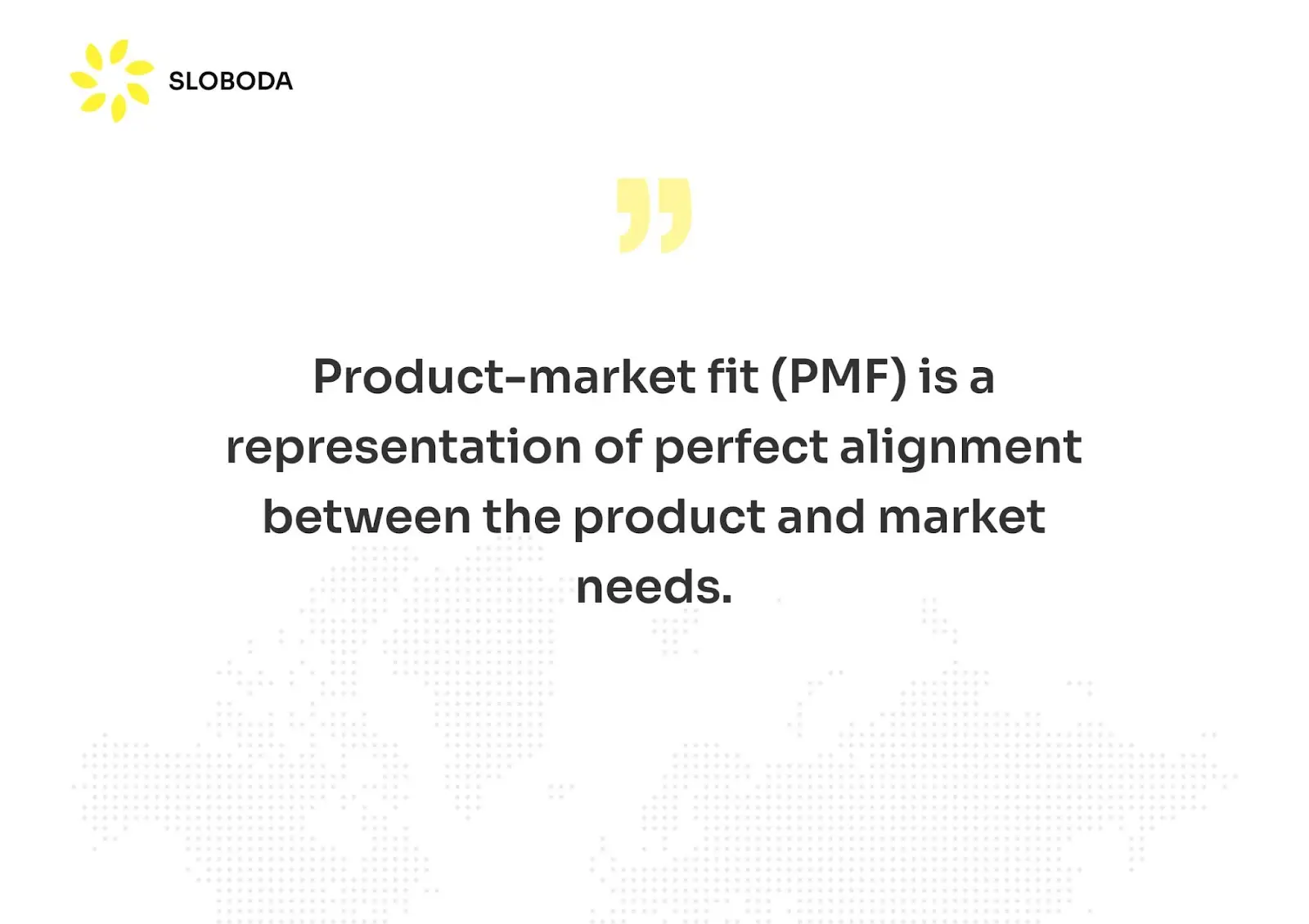

For example, Airbnb is a great PMF. The creators of the product analyzed the market and found the need for people to search for alternatives to hotels. Since hotels often offered steep prices and traveling was destined to become more accessible, this product eventually skyrocketed.
Historical Context of Product-Market Fit
Product-market fit seems like a concept that has been around forever, but in reality, it only became popularized in 2007 by Marc Andreessen. Before that time, the PMF would be more of a whisper rather than loud talk, exciting only in the walls of big enterprises. It was mostly referred to as “market validation” or “finding the right market”. The post by Andreessen, famous co-founder of Andreessen Horowitz, explored the concept wrapping it into a more presentable work. And it seems to have worked as the perfect catch-phrase.
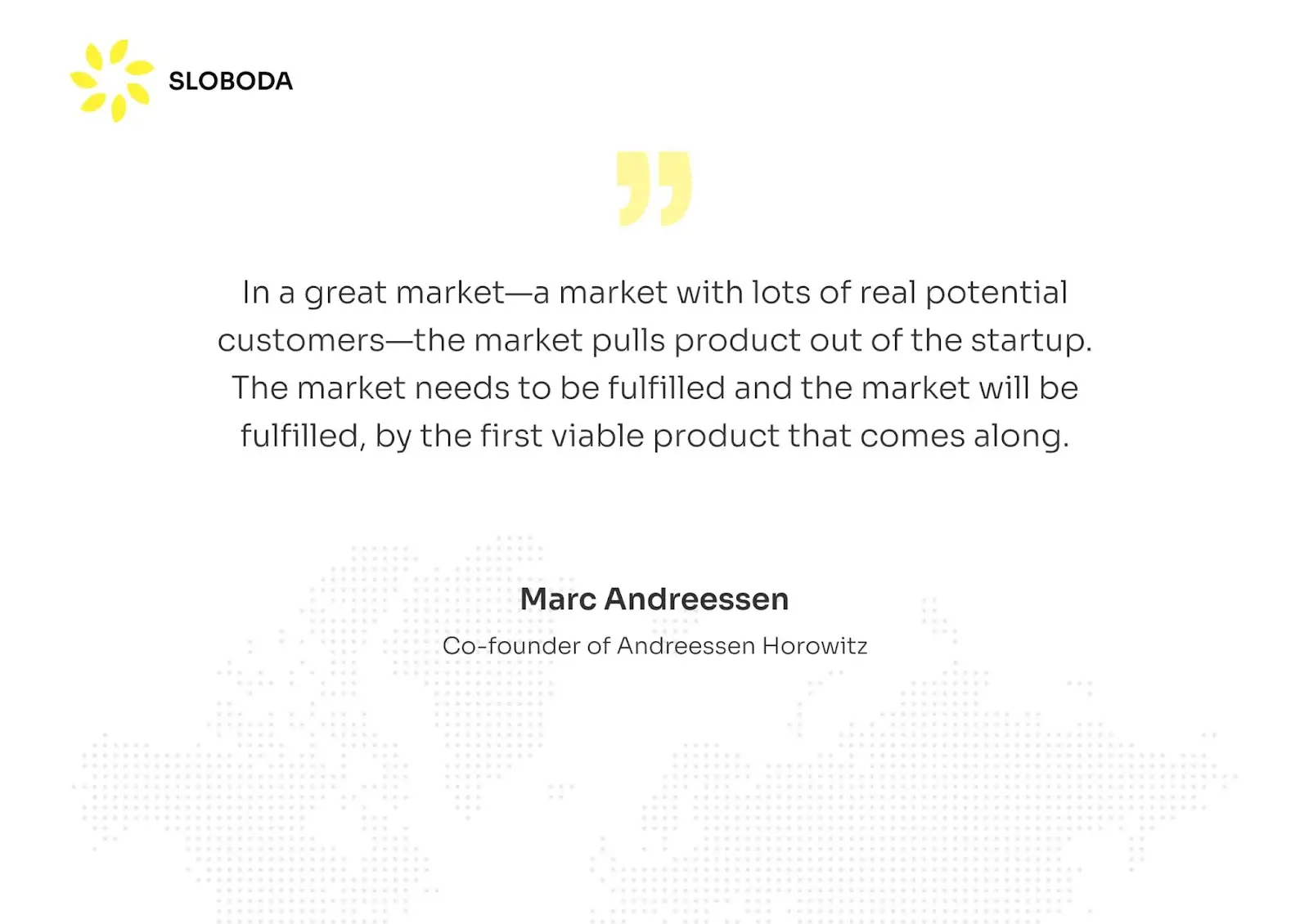

Source
The life-changing blog post was titled “The only thing that matters”, and in it, Andressen argued that the most important factor for startup success was this new but forever-sticking wording he had invented. Product-market fit seemed to be more important than the team and even the product itself. Many, many founders, investors, and business owners have related to this starting a major conversation about this concept.
Andressen stated that finding a good PMF was more of a demand and had to be done before the company shifted its focus to the product and its features. Because even if the product is impressive, it doesn’t grant it an immediate success.
This is what got product-market fit as a concept into a debate that continues up to today. This concept worries and intrigues people, and seems to be elusive and clear at the same time. And, of course, according marketing is as always very challenging to achieve.
Product Market-Fit Layers by Dan Olsen
While Marc Andreessen may have ignited the product-market fit conversation, others have since provided practical frameworks to navigate its complexities. Such as Dan Olsen, a product management expert, and his Product-Market Fit Pyramid framework.
Olsen’s pyramid presents a hierarchical structure. It is visualizing the key layers that build towards achieving PMF. Each layer represents a fundamental building block.
Target Customer
First is the foundation: your target customer. These are initially the people you envision as your customers, those with the most potent need for your product. This is where most of your sales are aimed.
Underserved Needs
Next, come people underserved needs. Understanding them is crucial, as you can’t offer a solution without knowing the true problem. These are supposed to be those points in your customer’s life that you can satisfy with the product of your creation. This tier is for how your sales should perform.
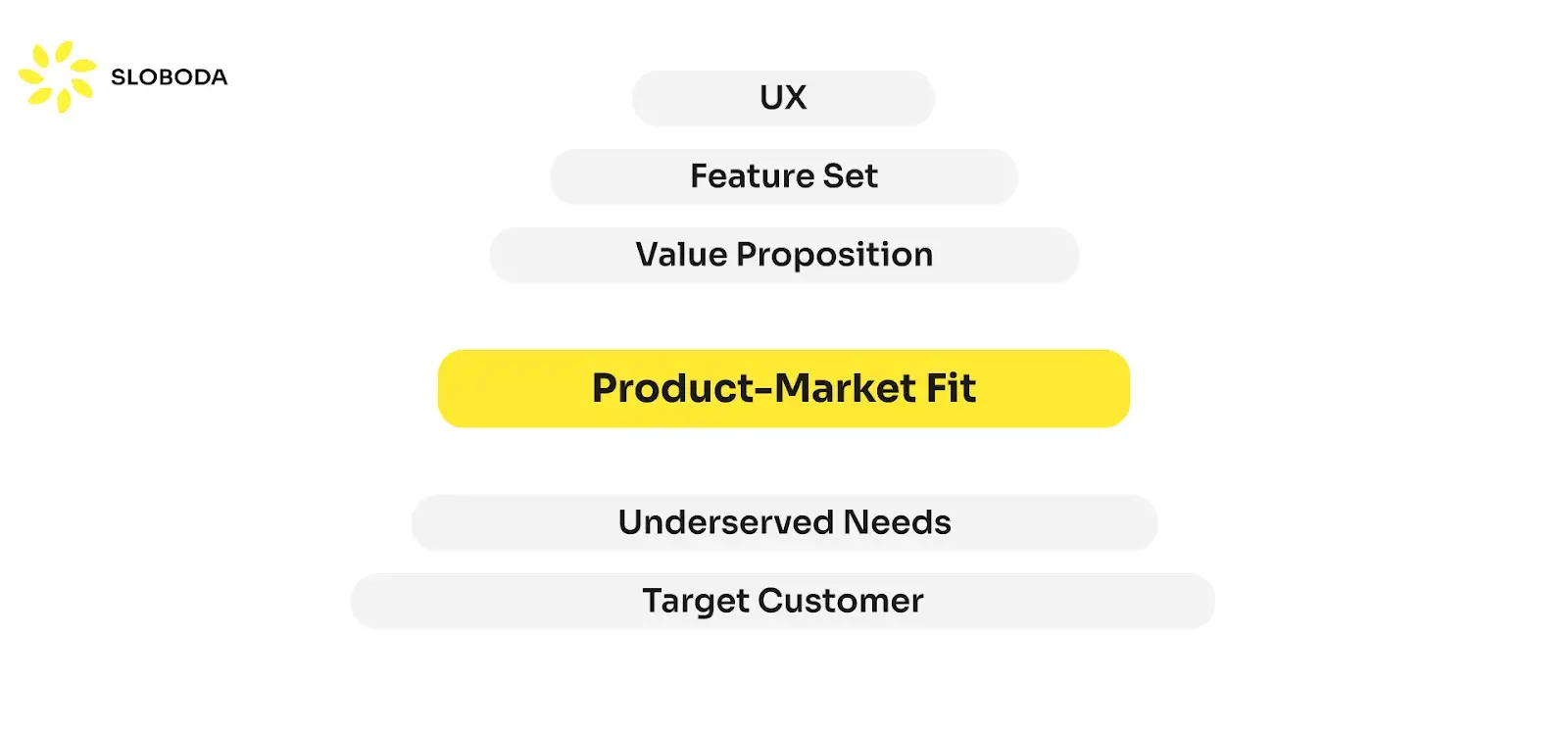

Olsen’s Pyramid
Value Proposition
Moving up the pyramid, there is a value proposition. This is where the customer requirements can be reformed into a clear reason why your product is the answer. It’s not just about features, but about the unique value and benefits. It explains why the product your in your company’s sales is needed.
Want to Achieve Product-Market Fit?
Contact Us
Features
Features come next. Armed with your value proposition, you define the minimum viable product (MVP) features that deliver that value. It’s crucial to prioritize and focus, avoiding feature bloat that can overwhelm users and delay launch. MVP can also help gather feedback from customers to see your product’s potential. And with minumum features, pivot would be easier if needed.
User Experience
Finally, atop the pyramid sits the user experience (UX). This encompasses everything from the interface and interactions to the overall user journey. A seamless and intuitive UX can be the difference between satisfied customers and frustrated dropouts.
The strength of Olsen’s framework lies in its actionable nature. It guides you through each layer, suggesting methods and tools to validate your assumptions. A sure way to iterate based on real-world client feedback.
Why Product-Market Fit is So Important
There are several reasons why this can greatly improve the software development process and business workflow. Apart from allowing you to achieve greater customer retention, the product-market fit is an absolute necessity for a startup. Here is why:
Resource-Effectiveness
Often many startups and SMEs struggle with retaining and preserving resources. In many cases, pivot becomes a hefty objective and one failure can lead to another up to the project’s closure. So, to avoid this, product-market fit is the best solution. Knowing where the pain points of your customers are, you can directly aim your resources toward satisfying them.
Try to base your decisions on data provided by your analysis. This will keep the resource shortage at bay.
Reduced Risk of Failure
The most prevalent reason for startup failure is the absence of market need. According to CBInsights, over 42% of startups suffer this fate. Running out of finances second, which could also be changed by product-market fit if constructed properly.
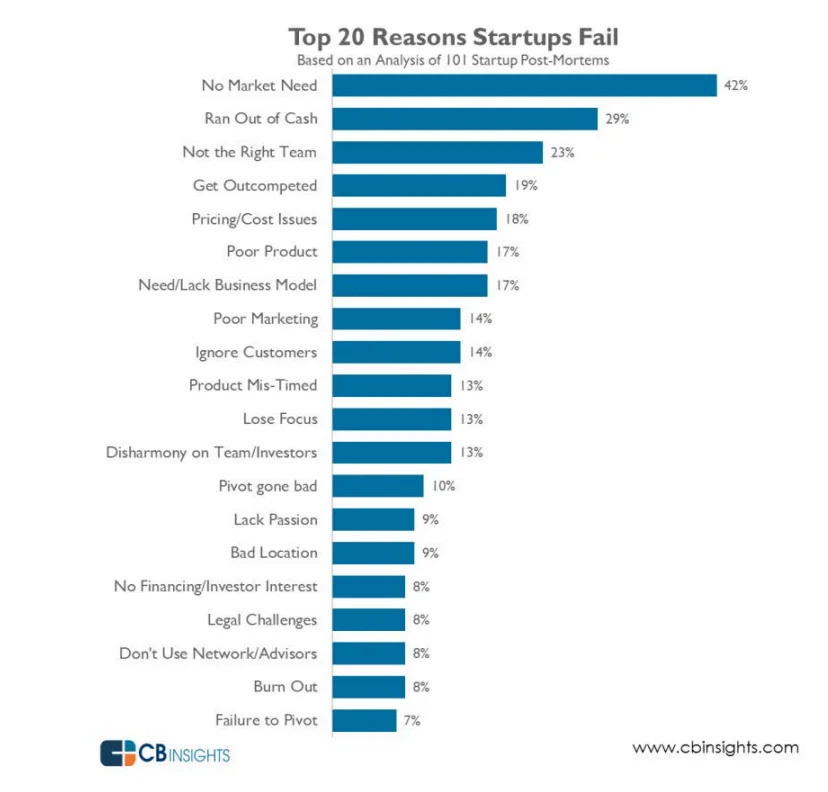

Reasons Startups Fail
Source: CB Insights
Sustainable Growth
The whole idea of product-market fit is to ensure that there is genuine demand for a product or service within a specific market.
Resonating with TA lays the foundation for sustainable growth and sales. By focusing on marketing in a right domain, your businesses can more effectively refine the offerings. It will also allow to capitalize on expansion opportunities.
Customer Loyalty
If you achieve product-market fit then a business has created something that addresses the pain points and desires of its customers. This will lead to increased customer satisfaction, loyalty, and retention. When people find value in a product and have their needs met consistently, they are more likely to remain loyal to the brand. They would advocate for it, and contribute to its long-term success.
Competitive Leverage
In today’s fast-paced and competitive business landscape, securing product-market fit can provide a significant advantage. To set your business apart from competitors, consider providing a unique solution that effectively satisfies your target audience. This differentiation can lead to higher market share, increased profitability, and a stronger position in the market. Additionally, having a solid product-market fit makes it more challenging for competitors to replicate or surpass the benefit statement the business offers.
Before You Start: 3 Key Components of Product Market Fit
Product-market fit has three crucial components that comprise it.
Market Demand
Understanding the market needs involves thorough research and analysis to identify existing gaps, pain points, and opportunities within the target market. By comprehending the demand dynamics, businesses can tailor their products or services to address specific market needs effectively.
Example: Airbnb recognized a growing trend of travelers seeking unique and affordable accommodations beyond traditional hotels. By tapping into this market demand, Airbnb was able to offer a platform where homeowners could rent out their spaces to travelers, fulfilling the need for alternative lodging options.
Your Product
Ensuring that your product aligns with market needs entails developing a solution that provides unique value propositions. It should be outstanding compared to existing offerings in the market. What can help in refining the product to meet customer expectations? The tools like:
- Iterative testing,
- Feedback collection,
- Continuous improvement.
Example: Slack, a messaging platform for teams, was designed to address the communication challenges faced by businesses. Its user-friendly interface, customizable features, and integration capabilities were the tools. They catered to the specific requirements of modern workplaces. This led to widespread adoption and ultimately ensured the offering resonated well with consumer preferences.
Seeking to Achieve Product-Market Fit?
Get a Free Consultation
Customer Needs
A customer-centric approach is paramount in achieving product-market fit. It involves actively listening to customer feedback, understanding their preferences, and adapting the product accordingly. By prioritizing customer needs and delivering exceptional user experiences, businesses can establish strong relationships with their TA and foster long-term loyalty.
Example: Netflix revolutionized the entertainment industry by offering a personalized streaming service that caters to individual viewer preferences. Through sophisticated algorithms and data analysis, Netflix recommends content tailored to each user’s viewing history, ensuring a highly customized experience that resonates with customer needs and preferences.
How to Achieve a Product-Market Fit
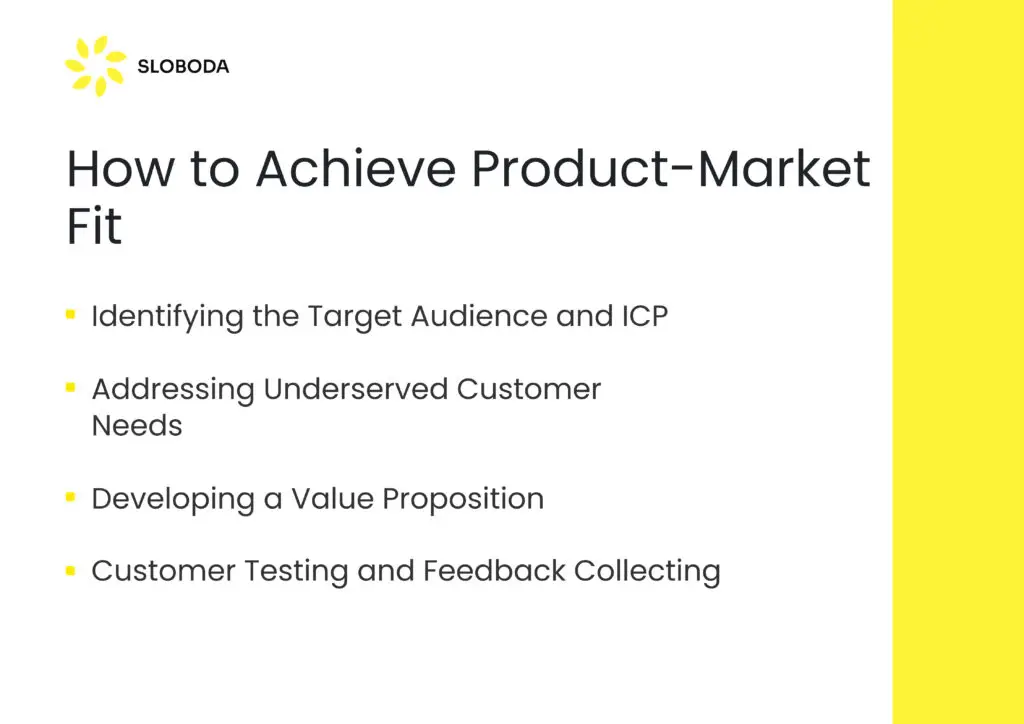

Product-market fit is the spot where your product perfectly aligns with the preferences of your target audience. Below are the steps that entrepreneurs should take before creating any kind of digital product. Doing so will ensure you’ll not waste money on something that is not needed or tested out.
Identifying the Target Customer
When you think of your product, you automatically think of a person who will be using it. This is your target customer – or ideal customer persona (ICP).
Techniques such as market segmentation, demographic analysis, and psychographic profiling can help in molding the ICP. Try to gain insights into the TA’s behaviors, preferences, and pain points. You can do it by researching the market and finding a focus group to survey about your product. This will help you tailor the product development and marketing strategies more effectively.
Addressing Underserved Customer Needs
Identifying and addressing underserved customer needs is essential for achieving product-market fit. This is the only thing that can help you get to the point of what your customer craves.
Strategies means to differentiate your business and attract a loyal customer base. Among them are conducting market research, analyzing competitor offerings, and soliciting feedback from the focus group. All this can act as a means to uncover unmet needs and pain points.
Developing a Value Proposition
You, no doubt, know what your product does great and how it can be helpful. A value proposition is needed to show others what makes your product unique.
In order to build it, ponder the product’s key benefits, identify the TA’s priorities, and craft persuasive messaging that resonates with them.
Quickly test your assumptions and validate hypotheses by creating a simplified version of the product or even a landing page. This will help you gather feedback from early adopters, and iterate based on real-world usage. If you want to perform rapid experimentation and refinement, this is the perfect time. MVP and prototyping enable businesses to fine-tune their product until it meets the needs and expectations of their target market.
Customer Testing and Feedback Collecting
When you have your idea fully formed and backed up by data, you could try to launch a preemptive focus group testing. To do so, you should find a focus group comprised of your potential customers. Then, try to create a survey based on your product’s features or prototype. This, in turn, will help you understand what improvements are needed. By actively involving potential customers in the development process you can ensure that the product resonates with the target market and drive widespread adoption.
Measuring Product Market Fit
So, now you know what product-market fit is, its history, and what it is composed of. Let’s dive deeper into how to measure it and lead your product to fit just right into the market’s dynamics. Let’s review the metrics as strategies for success.
Qualitative and Quantitative Metrics
Qualitative indicators include customer feedback, satisfaction levels, and perceived value. Quantitative metrics can be measured as adoption rates, revenue growth, and market share. You can use the following metrics:
- Net Promoter Score (NPS): Measures customer loyalty and willingness to recommend your product.
- Customer acquisition cost (CAC): Measures the cost to acquire a new customer.
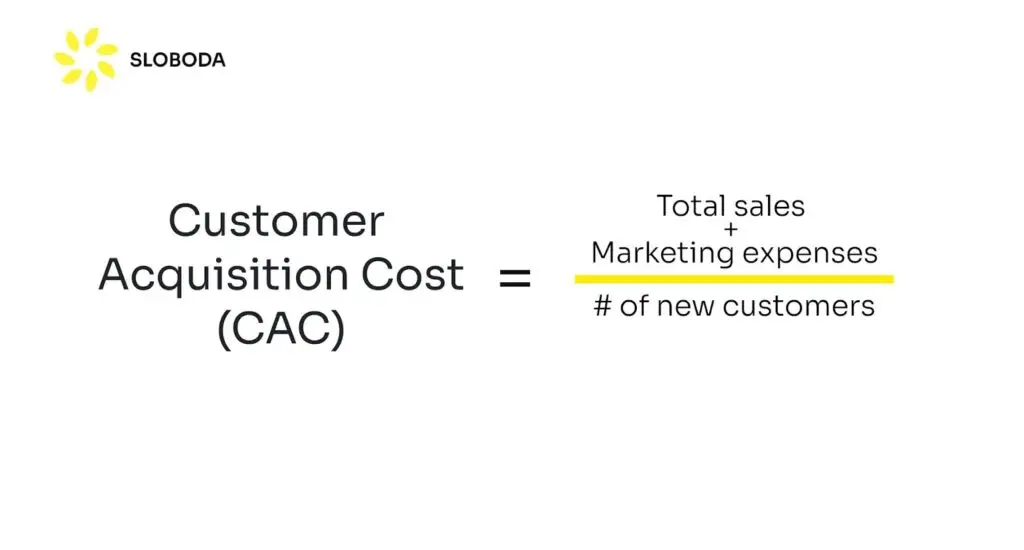

Both of the data types will help you gain a comprehensive understanding of whether your target market is the right one.
Customer Surveys and Feedback Analysis
Try soliciting feedback from customers to gather insights into their satisfaction levels, pain points, and preferences. Analyzing survey responses allows companies to identify areas for improvement and prioritize product enhancements based on customer needs. You can achieve this using surveys, analytics, and professional reports. A good example can be buying some information from research websites. One more way is to hire a business analyst to guide you through the process.
Minimum viable product can also be of help here. If you launch it, there is a possibility for you to measure customer satisfaction in beta version of your product. Then, with a new version, it would be easier to tackle all expectations.
Retention Rates and User Engagement
Retention rates and user engagement metrics provide valuable indicators of product-market fit. High retention rates suggest that people find ongoing value in the product and are likely to continue using it over time.
The retention rate measures the percentage of users who remain active within a specific timeframe after acquiring them.
Using this as a strategy, you could track how many users who signed up in January still use your products in March. Aim for a retention rate exceeding 60-70% within the first 3-6 months to indicate potential product-market fit.
Similarly, strong user engagement is measured by metrics such as daily active users and time spent on the platform. It indicates that the products align well with client needs and preferences. By monitoring these metrics closely, businesses can gauge the stickiness of their products, long-term viability, and optimise resources.
Net Promoter Score (NPS) and Its Relevance
The Net Promoter Score (NPS) is a widely used metric for assessing customer loyalty and satisfaction. It measures the likelihood of customers recommending the product to others on a scale from 0 to 10. A high NPS indicates strong advocacy and positive word-of-mouth, which are indicative of a well-fitted product. NPS allows you to evaluate the effectiveness of your efforts to improve product quality and customer experience.
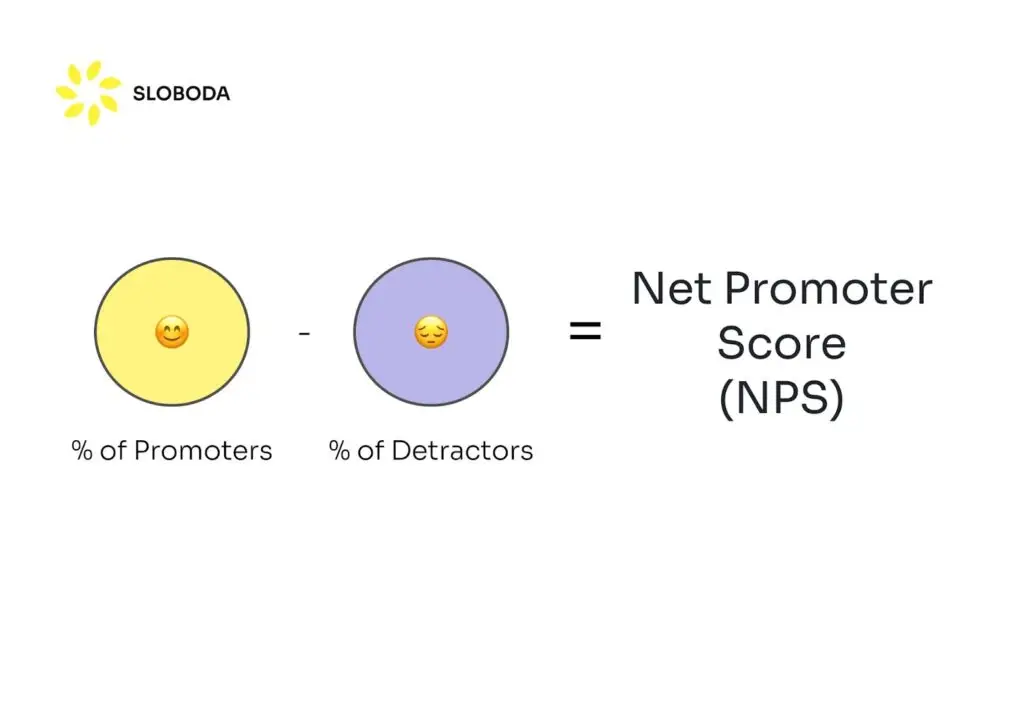

To calculate it, you can simply ask customers on a scale of 0-10 how likely they’d recommend you, then categorize responses into Promoters (likely to recommend), Passives (neutral), and Detractors (unhappy).
Subtract Detractor % from Promoter % to get your NPS score: a high score (80+) signifies loyal promoters, while a low score (<30) indicates critical issues needing attention.
Track your NPS over time and combine it with qualitative feedback to identify areas for improvement and ultimately achieve sustainable growth through happy customers.
Perfectly Achieved: Real-World Examples of Product-Market Fit
Achieving product-market fit might be hard but rewarding. Those companies and startups that eventually did it, rode the wave to success and became the products and services we can’t imagine our life without. Part of it might be because this is exactly what PMF is about.
So, what are the best examples of ideal product-market fit? Now, let’s explore the most prominent examples that encapsulate the idea of product-market fit the best.
The Evolution of Entertainment: How Netflix Found Its Niche


Netflix serves as a prime example of achieving exceptional product-market fit through adaptation and innovation. Initially, Netflix disrupted the video rental scene with a convenient, subscription-based service that delivered DVDs directly to customers.
This addressed the pain points of limited selection, inconvenience, and late fees associated with traditional video rental stores. Recognizing the shift towards digital consumption, Netflix revolutionized the industry by pioneering online streaming, offering instant access to a vast library of content. This has led Netflix to an astronomical 260.38 million paid subscribers worldwide in the 4th quarter of 2023.
Hence, the service is perfectly aligned with the increasing demand for on-demand entertainment. It solidified their product-market fit and secured their place as a leader in the streaming service industry.
Bridging the Distance Gap: Zoom’s Rise as a Key Business Tool


In a different sector, Zoom demonstrates another successful path to product-market fit. They addressed the challenges of communication in a growing remote work environment.
What they did was offer a free user-friendly interface in a freemium model. Their software enables reliable connection across various devices. This catered to the need for accessible and efficient communication, empowering individuals and businesses to connect seamlessly.
The COVID-19 pandemic further amplified the start of remote communication. This led to explosive growth and sales for Zoom. And now, the Zoom app has been downloaded over 81 million times. Their product perfectly matched the demands of a rapidly changing world, cementing their position as a leader in the video conferencing industry.
These are just two examples of countless companies that have achieved product-market fit. Their stories illuminate the key ingredients:
- Identifying a core need,
- Offering a delightful and intuitive solution,
- Continuously iterating based on the feedback.
Key Points
Summing it up, when wanting to build a product you should start with an analysis of where your product would fit on the market. The product-market fit concept is comprised of three essential elements: demand, your product, and customer needs.
- You need to identify the target customer.
- Try to look for what underserved needs of your TA your product can cover.
- Next, develop a value proposition based on surveys and what you’ve found before this.
- Look at preemptive testing with a focus group to evaluate your product before its official release.
Customer needs and requirements are constantly changing, so does your product, and so does market fit. To get expert help in building products from scratch, contact Sloboda for some practical insights.